Team:TU-Munich/HumanPractice/Media
From 2013.igem.org
(→Survey on the public perception of biotechnology) |
PSchneider (Talk | contribs) m (→Media coverage on iGEM 2013 project) |
||
| (89 intermediate revisions not shown) | |||
| Line 5: | Line 5: | ||
<div id="wikicontent"> | <div id="wikicontent"> | ||
<!-- Star des Inhalts --> | <!-- Star des Inhalts --> | ||
| + | ==Science Communication & Publicity== | ||
| + | <div class="quote"> | ||
| + | "A scientist has to be neutral in his search for the truth, but he cannot be neutral as to the use of that truth when found. If you know more than other people, you have more responsibility, rather than less." | ||
| + | <div class="author">- Baron C.P. Snow</div> | ||
| + | </div> | ||
| + | |||
| + | The importance of science communication cannot be stressed enough. As students, we spend huge amounts of time at the TUM life science campus and at the lab, allowing us to dig deep into our subjects, focus on our studies and enjoy the privilege of an environment designed to support us in the pursuit of our scientific interests. | ||
| + | |||
| + | But our knowledge and experiences wouldn't be of much use if we didn't communicate and share them. New technology can't find the support it needs if no one apart from a few experts understands what it is all about and many great ideas wouldn't have seen the light of day without the creative synergies that develop through interdisciplinary dialog. Communicating ideas to people with different backgrounds not only provides valuable new input and views from way outside the box: The necessity to take a step back and explain the bigger picture also brings us to look at our work and intentions from a whole new perspective, deepens our understanding and brings up aspects previously missed. | ||
| + | |||
| + | Furthermore, a well informed public creates the kind of open minded environment that catalyzes bold thinking and allows great ideas to thrive. As undergrads, we're still halfway between the experts of our fields and the public. So as part of our project, we set out to mediate between those two worlds, to inspire and get inspired. | ||
==Deutsches Museum Munich== | ==Deutsches Museum Munich== | ||
| - | [[File:TUM13 German_Museum.jpg|thumb|right|250px| Figure 1: Our poster for the museum (german)]] | + | [[File:TUM13 German_Museum.jpg|thumb|right|250px| '''Figure 1:''' Our poster for the museum (german)]] |
| - | We had the chance to introduce the | + | We had the chance to introduce the PhyscoFilter and our iGEM team to the public at the visitors lab at the German Museum of Munich. Green biotechnology is perceived rather negatively in Germany, but the majority of expressed concerns relates to applications in agriculture and food. So additional to presenting our project and answering a lot of interested questions about synthetic biology, we asked people about their views to see if projects like the PhyscoFilter can bring a different perspective into the public debate about biotechnology. |
| - | Because of the | + | Because of the Oktoberfest, we had a large and very international audience with whom we had very interesting discussions. We had prepared a poster aimed at a larger audience in German language, but we could have needed posters in English, Italian, French, Russian, Chinese and Hebrew as well and had the chance to use all the foreign language skills we had. The feedback we received was much more positive than expected. People appreciated our idea and considered this application of green biotechnology as much more feasible due to its thorough biosafety profile. |
We really enjoyed this campaign because of all the valuable feedback and the large diversity of input we got. It was very inspiring to meet and talk to all those people and once again, our iGEM activities enriched our views. | We really enjoyed this campaign because of all the valuable feedback and the large diversity of input we got. It was very inspiring to meet and talk to all those people and once again, our iGEM activities enriched our views. | ||
| Line 18: | Line 29: | ||
====PhyscoFilter presentation at the German Museum==== | ====PhyscoFilter presentation at the German Museum==== | ||
<html> | <html> | ||
| + | <div class="box-center"> | ||
<ul class="bxgallery"> | <ul class="bxgallery"> | ||
| - | <li><img src="https://static.igem.org/mediawiki/2013/7/78/TUM13_Foto_Germanmuseum_01.png" /></li> | + | <li><img src="https://static.igem.org/mediawiki/2013/thumb/7/78/TUM13_Foto_Germanmuseum_01.png/350px-TUM13_Foto_Germanmuseum_01.png" /></li> |
| - | <li><img src="https://static.igem.org/mediawiki/2013/2/2f/TUM13_Foto_Germanmuseum_02.png" /></li> | + | <li><img src="https://static.igem.org/mediawiki/2013/thumb/2/2f/TUM13_Foto_Germanmuseum_02.png/350px-TUM13_Foto_Germanmuseum_02.png" /></li> |
| - | <li><img src="https://static.igem.org/mediawiki/2013/0/00/TUM13_Foto_Germanmuseum_03.png" /></li> | + | <li><img src="https://static.igem.org/mediawiki/2013/thumb/0/00/TUM13_Foto_Germanmuseum_03.png/350px-TUM13_Foto_Germanmuseum_03.png" /></li> |
| - | <li><img src="https://static.igem.org/mediawiki/2013/5/50/TUM13_Foto_Germanmuseum_04.png" /></li> | + | <li><img src="https://static.igem.org/mediawiki/2013/thumb/5/50/TUM13_Foto_Germanmuseum_04.png/350px-TUM13_Foto_Germanmuseum_04.png" /></li> |
| - | <li><img src="https://static.igem.org/mediawiki/2013/c/cd/TUM13_Foto_Germanmuseum_05.png" /></li> | + | <li><img src="https://static.igem.org/mediawiki/2013/thumb/c/cd/TUM13_Foto_Germanmuseum_05.png/350px-TUM13_Foto_Germanmuseum_05.png" /></li> |
| - | <li><img src="https://static.igem.org/mediawiki/2013/f/fa/TUM13_Foto_Germanmuseum_06.png" /></li> | + | <li><img src="https://static.igem.org/mediawiki/2013/thumb/f/fa/TUM13_Foto_Germanmuseum_06.png/350px-TUM13_Foto_Germanmuseum_06.png" /></li> |
| - | <li><img src="https://static.igem.org/mediawiki/2013/b/b1/TUM13_Foto_Germanmuseum_07.png" /></li> | + | <li><img src="https://static.igem.org/mediawiki/2013/thumb/b/b1/TUM13_Foto_Germanmuseum_07.png/350px-TUM13_Foto_Germanmuseum_07.png" /></li> |
| - | <li><img src="https://static.igem.org/mediawiki/2013/e/ea/TUM13_Foto_Germanmuseum_08.png" /></li> | + | <li><img src="https://static.igem.org/mediawiki/2013/thumb/e/ea/TUM13_Foto_Germanmuseum_08.png/350px-TUM13_Foto_Germanmuseum_08.png" /></li> |
| - | <li><img src="https://static.igem.org/mediawiki/2013/9/94/TUM13_Foto_Germanmuseum_09.png" /></li> | + | <li><img src="https://static.igem.org/mediawiki/2013/thumb/9/94/TUM13_Foto_Germanmuseum_09.png/350px-TUM13_Foto_Germanmuseum_09.png" /></li> |
| - | <li><img src="https://static.igem.org/mediawiki/2013/b/b7/TUM13_Foto_Germanmuseum_10.png" /></li> | + | <li><img src="https://static.igem.org/mediawiki/2013/thumb/b/b7/TUM13_Foto_Germanmuseum_10.png/350px-TUM13_Foto_Germanmuseum_10.png" /></li> |
| - | <li><img src="https://static.igem.org/mediawiki/2013/2/20/TUM13_Foto_Germanmuseum_11.png" /></li> | + | <li><img src="https://static.igem.org/mediawiki/2013/thumb/2/20/TUM13_Foto_Germanmuseum_11.png/350px-TUM13_Foto_Germanmuseum_11.png" /></li> |
| - | <li><img src="https://static.igem.org/mediawiki/2013/6/6b/TUM13_Foto_Germanmuseum_12.png" /></li> | + | <li><img src="https://static.igem.org/mediawiki/2013/thumb/6/6b/TUM13_Foto_Germanmuseum_12.png/350px-TUM13_Foto_Germanmuseum_12.png" /></li> |
| - | <li><img src="https://static.igem.org/mediawiki/2013/2/28/TUM13_Foto_Germanmuseum_13.png" /></li> | + | <li><img src="https://static.igem.org/mediawiki/2013/thumb/2/28/TUM13_Foto_Germanmuseum_13.png/350px-TUM13_Foto_Germanmuseum_13.png" /></li> |
| - | <li><img src="https://static.igem.org/mediawiki/2013/4/47/TUM13_Foto_Germanmuseum_14.png" /></li> | + | <li><img src="https://static.igem.org/mediawiki/2013/thumb/4/47/TUM13_Foto_Germanmuseum_14.png/350px-TUM13_Foto_Germanmuseum_14.png" /></li> |
| - | <li><img src="https://static.igem.org/mediawiki/2013/1/1f/TUM13_Foto_Germanmuseum_15.png" /></li> | + | <li><img src="https://static.igem.org/mediawiki/2013/thumb/1/1f/TUM13_Foto_Germanmuseum_15.png/350px-TUM13_Foto_Germanmuseum_15.png" /></li> |
| - | <li><img src="https://static.igem.org/mediawiki/2013/3/31/TUM13_Foto_Germanmuseum_16.png" /></li> | + | <li><img src="https://static.igem.org/mediawiki/2013/thumb/3/31/TUM13_Foto_Germanmuseum_16.png/350px-TUM13_Foto_Germanmuseum_16.png" /></li> |
</ul> | </ul> | ||
| + | </div> | ||
</html> | </html> | ||
| - | ==Survey on the public perception of | + | ==Survey on the public perception of SynBio== |
| - | The public perception of biotechnology in Germany is traditionally not very positive. But how much do people know about | + | The public perception of biotechnology in Germany is traditionally not very positive. But how much do people know about synthetic biology? Are red, white and green biotechnology perceived equally positive or negative? On the iGEM-day-Germany, we set out to inform, explain and investigate. How much impact does the pollution of water through pharmaceuticals and hormones have on people's private life as well as globally according to public opinion? Are the projects addressing these problems able to increase the acceptance of synthetic biology? And would people want to use our filter or support its use in public sewage plants? |
| - | [[File:Fragebogen_iGEM_Germany_day_Translated_copy_01.png|thumb|left| | + | [[File:Fragebogen_iGEM_Germany_day_Translated_copy_01.png|thumb|left|430px| '''Figure 2:''' Our questionnaire page 1 (translated to English)]] [[File:Fragebogen_iGEM_Germany_day_Translated_copy_02.png|thumb|right|430px| '''Figure 3:''' Our questionnaire page 2 (translated to English)]] |
| - | ==== | + | ===Results:=== |
| + | |||
| + | [[File:Auswertung_Umfrage_translated_01.png|thumb|left|430px| '''Figure 4:''' Results page 1 (translated to English)]][[File:Auswertung_Umfrage_translated_02.png|thumb|right|430px| '''Figure 5:''' Results page 2 (translated to English)]] | ||
| + | |||
| + | Green biotechnology is seen as far more controversial than industrial biotechnology, while medical applications are widely accepted. Most people feel personally concerned by water pollution and also perceive this problem as highly relevant in a global context. If synthetic biology can offer solutions for problems like these, people would be more likely to approve genetic engineering. Nearly two thirds would use a moss filter in their homes and 84% would agree with its use e.g. for hospital wastewater. We were happy to learn from the evaluation that our project is widely perceived as positive and that people found our survey and the conversations helpful to learn more about synthetic biology. | ||
| + | |||
| + | ====Our survey booth in the city of Freising==== | ||
<html> | <html> | ||
| + | <div class="box-center"> | ||
<ul class="bxgallery"> | <ul class="bxgallery"> | ||
<li><img src="https://static.igem.org/mediawiki/2013/thumb/3/36/TUM13_Foto_Information_Freising1.jpg/350px-TUM13_Foto_Information_Freising1.jpg" /></li> | <li><img src="https://static.igem.org/mediawiki/2013/thumb/3/36/TUM13_Foto_Information_Freising1.jpg/350px-TUM13_Foto_Information_Freising1.jpg" /></li> | ||
| Line 56: | Line 76: | ||
<li><img src="https://static.igem.org/mediawiki/2013/thumb/f/fd/TUM13_Foto_Information_Freising9.jpg/350px-TUM13_Foto_Information_Freising9.jpg" /></li> | <li><img src="https://static.igem.org/mediawiki/2013/thumb/f/fd/TUM13_Foto_Information_Freising9.jpg/350px-TUM13_Foto_Information_Freising9.jpg" /></li> | ||
</ul> | </ul> | ||
| + | </div> | ||
</html> | </html> | ||
==13th Munich Science Days== | ==13th Munich Science Days== | ||
| - | http://www.muenchner-wissenschaftstage.de/2013/front_content.php | + | November 16th to 19th we will be presenting our project at the [http://www.muenchner-wissenschaftstage.de/2013/front_content.php 13th Munich Science Days]. This popular public science fair offers workshops for school classes, public discussions, about 30 presentations and four theme nights, next to a large exhibition, tours and programs for kids. |
| - | == | + | ==Speech about iGEM at the GoBiochem Team TU Munich== |
| - | + | ||
| - | + | ||
| - | + | ||
| - | + | ||
| - | + | [[File:TUM13 GoBiochem.jpg|thumb|right|250px| '''Figure 6:''' Speech at the GoBiochem Team TU Munich]] | |
| - | [[File:TUM13 | + | |
| - | + | ||
| - | + | ||
| - | + | To inform scientifically interested pupils about the iGEM competition, Leonie and Johanna gave a lecture on our project to students participating in the [http://www.ch.tum.de/gobiochem/ GoBiochem] program. This program is an initiative from several biochemistry and molecular biotechnology students of the TU Munich who give pupils, aged between 15 and 18, the opportunity to get an insight into the biochemistry degree both into theoretical and practical aspects. They listen to talks about biological and chemical topics, perform a two-week introductive laboratory course and visit different TUM institutes to get an insight into real science. | |
| - | + | Therefore the presentation about synthetic biology and the iGEM competition in particular was given to an ideal target audience to inspire a new generation. | |
| - | [http://www. | + | |
| - | + | ||
| - | + | ==Media coverage on iGEM 2013 project== | |
| - | + | <html> | |
| - | <div class="box- | + | <div class="box-center"> |
| - | < | + | <ul class="bxgallery"> |
| - | </ | + | <li><img src="https://static.igem.org/mediawiki/2013/a/a7/TUM13_Pressrelease.png" alt="<b>Figure 7:</b> Article in the <a href='http://www.wzw.tum.de/index.php?id=185&no_cache=1&tx_ttnews%5Btt_news%5D=573'>TUM WZW News</a>"/></li> |
| - | + | <li><img src="https://static.igem.org/mediawiki/2013/8/8a/TUM13_Press_trinational.png" alt="<b>Figure 8:</b> Article in <a href='http://www.tip-itp.eu/2013/09/igem-team-tu-munich-visiting-labs-of-the-tip-in-freiburg/'>Trinational Institute for Plant research News</a>"/>/></li> | |
| - | + | <li><img src="https://static.igem.org/mediawiki/2013/c/c6/TUM13_Biotechnologie_de.png" alt="<b>Figure 9:</b> Article in <a href='http://www.biotechnologie.de/BIO/Navigation/DE/root,did=166602.html?listBlId=74462&'>www.biotechnologie.de</a>"/></li> | |
| - | + | <li><img src="https://static.igem.org/mediawiki/2013/c/cb/TUM13_Innovations-report.png" alt="<b>Figure 10:</b> Article on <a href='http://www.innovations-report.de/html/berichte/biowissenschaften_chemie/moos_sauberes_wasser_abwasserreinigung_physcofilter_220378.html'>www.innovations-report.de</a>"/></li> | |
| - | + | <li><img src="https://static.igem.org/mediawiki/2013/8/82/TUM13_Schmude.JPG" alt="<b>Figure 11:</b> At the interview with Magdalena Schmude from <a href='http://www.dradio.de/dlf/'> Deutschlandfunk radio station</a>"/></li> | |
| - | + | <li><img src="https://static.igem.org/mediawiki/2013/e/eb/TUM13_Deutschlandfunk.png" alt="<b>Figure 12:</b> Report from <a href='http://www.dradio.de/dlf/sendungen/forschak/2283279/'>Deutschlandfunk</a>"/></li> | |
| - | " | + | </ul> |
</div> | </div> | ||
| - | + | </html> | |
| - | + | ||
| - | < | + | |
| - | + | ||
| - | + | ||
| - | + | ||
| - | + | ||
| - | + | ||
| - | + | ||
| - | + | ||
| - | + | ||
| - | + | ||
| - | + | ||
| - | + | ||
| - | + | ||
| - | + | ||
| - | + | ||
| - | + | ||
| - | + | ||
| - | + | ||
| - | + | ||
| - | + | ||
| - | + | ||
| - | + | ||
| - | + | ||
| - | + | ||
| - | + | ||
| - | + | ||
| - | + | ||
| - | + | ||
| - | + | ||
| - | + | ||
| - | + | ||
| - | + | ||
| - | + | ||
| - | + | ||
| - | + | ||
| - | + | ||
| - | + | ||
| - | + | ||
| - | + | ||
| - | + | ||
| - | + | ||
| - | + | ||
| - | + | ||
| - | + | ||
| - | + | ||
| - | + | ||
| - | + | ||
| - | + | ||
| - | + | ||
| - | + | ||
| - | + | ||
| - | + | ||
| - | + | ||
| - | + | ||
| - | + | ||
| - | + | ||
| - | + | ||
| - | + | ||
| - | + | ||
| - | + | ||
| - | + | ||
| - | + | ||
| - | + | ||
| - | + | ||
| - | + | ||
| - | + | ||
| - | + | ||
| - | + | ||
| - | + | ||
| - | + | ||
| - | + | ||
| - | + | ||
| - | + | ||
| - | + | ||
| - | + | ||
| - | + | ||
| - | + | ||
| - | + | ||
| - | + | ||
| - | + | ||
| - | + | ||
| - | + | ||
| - | + | ||
| - | + | ||
| - | + | ||
| - | + | ||
| - | + | ||
| - | + | ||
| - | + | ||
| - | + | ||
| - | + | ||
| - | + | ||
| - | + | ||
| - | + | ||
| - | + | ||
| - | + | ||
| - | + | ||
| - | + | ||
| - | + | ||
| - | + | ||
| - | + | ||
| - | + | ||
| - | + | ||
| - | + | ||
| - | + | ||
| - | + | ||
| - | + | ||
| - | + | ||
| - | + | ||
| - | + | ||
| - | + | ||
| - | + | ||
| - | + | ||
| - | + | ||
| - | + | ||
| - | + | ||
| - | + | ||
| - | + | ||
| - | + | ||
| - | + | ||
==Media coverage on iGEM 2012 project after the Jamboree== | ==Media coverage on iGEM 2012 project after the Jamboree== | ||
| - | <div class="box-left"> | + | <div class="box-left" style="height: 350px;"> |
| - | [[File:TUM13 Beer_advocat.jpg|thumb|right| | + | [[File:TUM13 Beer_advocat.jpg|thumb|right|200px| '''Figure 13:''' "Munich Scientists Tinker with Yeast"]] |
| - | + | This [http://aleszu.com/2013/01/munich-scientists-tinker-with-yeast/ article] by Aleszu Bajak covered our 2012 project in [http://beeradvocate.com/community/threads/beeradvocate-magazine-72-pierogies-baileys-range-lawsons-vivant-buenos-aires-class-of-2012.59179/ BeerAdvocate magazine, #72] | |
</div> | </div> | ||
| - | <div class="box-right"> | + | <div class="box-right" style="height: 350px;"> |
<html><iframe width="430" height="270" style="border:1px #FFFFFF solide;" name="myiframe" scrolling="auto" frameborder="1" align=aus marginheight="5px" marginwidth="5px" src="http://www.youtube.com/embed/iRO0-fMIW9I?feature=player_detailpage" frameborder="0" allowfullscreen> | <html><iframe width="430" height="270" style="border:1px #FFFFFF solide;" name="myiframe" scrolling="auto" frameborder="1" align=aus marginheight="5px" marginwidth="5px" src="http://www.youtube.com/embed/iRO0-fMIW9I?feature=player_detailpage" frameborder="0" allowfullscreen> | ||
</iframe></html> | </iframe></html> | ||
"A gateway to a lot of Synthetic Biology" - The part about our last years iGEM project is from minute 14.20 on. An interesting video from the beginning to the end by the way. | "A gateway to a lot of Synthetic Biology" - The part about our last years iGEM project is from minute 14.20 on. An interesting video from the beginning to the end by the way. | ||
| - | |||
</div> | </div> | ||
| - | == | + | ==Representation on Social Media Networks== |
| + | To be easily aproachable for people´s questions about iGEM, our project and our team and to stay in touch, we used our accounts on [https://www.facebook.com/pages/iGEM-TU-M%C3%BCnchen/149746078408629 Facebook] and [https://twitter.com/iGEM_TUM Twitter]. | ||
| - | < | + | <html> |
| - | + | ||
| - | + | ||
| - | + | ||
| - | + | ||
| + | <div style="width:450px;font-size:8px;text-align:right;float:right;"><iframe width="450" height="505" src="http://twitterforweb.com/iframe/twitterbox/iGEM_TUM.html?s=1,0,3,450,505,f4f4f4,0,c4c4c4,101010,1,1,336699" frameborder="0" scrolling="no" allowtransparency="1"></iframe>Created by: <a href="http://twitterforweb.com" target="_blank">twitter website widget</a></div> | ||
| + | |||
| + | <div id="fb-root"></div> | ||
| + | <script>(function(d, s, id) { | ||
| + | var js, fjs = d.getElementsByTagName(s)[0]; | ||
| + | if (d.getElementById(id)) return; | ||
| + | js = d.createElement(s); js.id = id; | ||
| + | js.src = "//connect.facebook.net/en_US/all.js#xfbml=1"; | ||
| + | fjs.parentNode.insertBefore(js, fjs); | ||
| + | }(document, 'script', 'facebook-jssdk'));</script> | ||
| + | |||
| + | <div style="float: left; margin-right: 20px; background: white;" class="fb-like-box" data-href="https://www.facebook.com/pages/iGEM-TU-M%C3%BCnchen/149746078408629" data-width="450" data-height="600" data-colorscheme="light" data-show-faces="true" data-header="true" data-stream="true" data-show-border="true"></div> | ||
| + | </html> | ||
| + | <div class="visualClear"></div> | ||
<!-- Ende des Inhalts --> | <!-- Ende des Inhalts --> | ||
Latest revision as of 02:51, 29 October 2013
Science Communication & Publicity
"A scientist has to be neutral in his search for the truth, but he cannot be neutral as to the use of that truth when found. If you know more than other people, you have more responsibility, rather than less."
The importance of science communication cannot be stressed enough. As students, we spend huge amounts of time at the TUM life science campus and at the lab, allowing us to dig deep into our subjects, focus on our studies and enjoy the privilege of an environment designed to support us in the pursuit of our scientific interests.
But our knowledge and experiences wouldn't be of much use if we didn't communicate and share them. New technology can't find the support it needs if no one apart from a few experts understands what it is all about and many great ideas wouldn't have seen the light of day without the creative synergies that develop through interdisciplinary dialog. Communicating ideas to people with different backgrounds not only provides valuable new input and views from way outside the box: The necessity to take a step back and explain the bigger picture also brings us to look at our work and intentions from a whole new perspective, deepens our understanding and brings up aspects previously missed.
Furthermore, a well informed public creates the kind of open minded environment that catalyzes bold thinking and allows great ideas to thrive. As undergrads, we're still halfway between the experts of our fields and the public. So as part of our project, we set out to mediate between those two worlds, to inspire and get inspired.
Deutsches Museum Munich
We had the chance to introduce the PhyscoFilter and our iGEM team to the public at the visitors lab at the German Museum of Munich. Green biotechnology is perceived rather negatively in Germany, but the majority of expressed concerns relates to applications in agriculture and food. So additional to presenting our project and answering a lot of interested questions about synthetic biology, we asked people about their views to see if projects like the PhyscoFilter can bring a different perspective into the public debate about biotechnology.
Because of the Oktoberfest, we had a large and very international audience with whom we had very interesting discussions. We had prepared a poster aimed at a larger audience in German language, but we could have needed posters in English, Italian, French, Russian, Chinese and Hebrew as well and had the chance to use all the foreign language skills we had. The feedback we received was much more positive than expected. People appreciated our idea and considered this application of green biotechnology as much more feasible due to its thorough biosafety profile.
We really enjoyed this campaign because of all the valuable feedback and the large diversity of input we got. It was very inspiring to meet and talk to all those people and once again, our iGEM activities enriched our views.
PhyscoFilter presentation at the German Museum
Survey on the public perception of SynBio
The public perception of biotechnology in Germany is traditionally not very positive. But how much do people know about synthetic biology? Are red, white and green biotechnology perceived equally positive or negative? On the iGEM-day-Germany, we set out to inform, explain and investigate. How much impact does the pollution of water through pharmaceuticals and hormones have on people's private life as well as globally according to public opinion? Are the projects addressing these problems able to increase the acceptance of synthetic biology? And would people want to use our filter or support its use in public sewage plants?
Results:
Green biotechnology is seen as far more controversial than industrial biotechnology, while medical applications are widely accepted. Most people feel personally concerned by water pollution and also perceive this problem as highly relevant in a global context. If synthetic biology can offer solutions for problems like these, people would be more likely to approve genetic engineering. Nearly two thirds would use a moss filter in their homes and 84% would agree with its use e.g. for hospital wastewater. We were happy to learn from the evaluation that our project is widely perceived as positive and that people found our survey and the conversations helpful to learn more about synthetic biology.
Our survey booth in the city of Freising
13th Munich Science Days
November 16th to 19th we will be presenting our project at the [http://www.muenchner-wissenschaftstage.de/2013/front_content.php 13th Munich Science Days]. This popular public science fair offers workshops for school classes, public discussions, about 30 presentations and four theme nights, next to a large exhibition, tours and programs for kids.
Speech about iGEM at the GoBiochem Team TU Munich
To inform scientifically interested pupils about the iGEM competition, Leonie and Johanna gave a lecture on our project to students participating in the [http://www.ch.tum.de/gobiochem/ GoBiochem] program. This program is an initiative from several biochemistry and molecular biotechnology students of the TU Munich who give pupils, aged between 15 and 18, the opportunity to get an insight into the biochemistry degree both into theoretical and practical aspects. They listen to talks about biological and chemical topics, perform a two-week introductive laboratory course and visit different TUM institutes to get an insight into real science. Therefore the presentation about synthetic biology and the iGEM competition in particular was given to an ideal target audience to inspire a new generation.
Media coverage on iGEM 2013 project

 />
/>


Media coverage on iGEM 2012 project after the Jamboree
This [http://aleszu.com/2013/01/munich-scientists-tinker-with-yeast/ article] by Aleszu Bajak covered our 2012 project in [http://beeradvocate.com/community/threads/beeradvocate-magazine-72-pierogies-baileys-range-lawsons-vivant-buenos-aires-class-of-2012.59179/ BeerAdvocate magazine, #72]
"A gateway to a lot of Synthetic Biology" - The part about our last years iGEM project is from minute 14.20 on. An interesting video from the beginning to the end by the way.
Representation on Social Media Networks
To be easily aproachable for people´s questions about iGEM, our project and our team and to stay in touch, we used our accounts on Facebook and Twitter.
 "
"



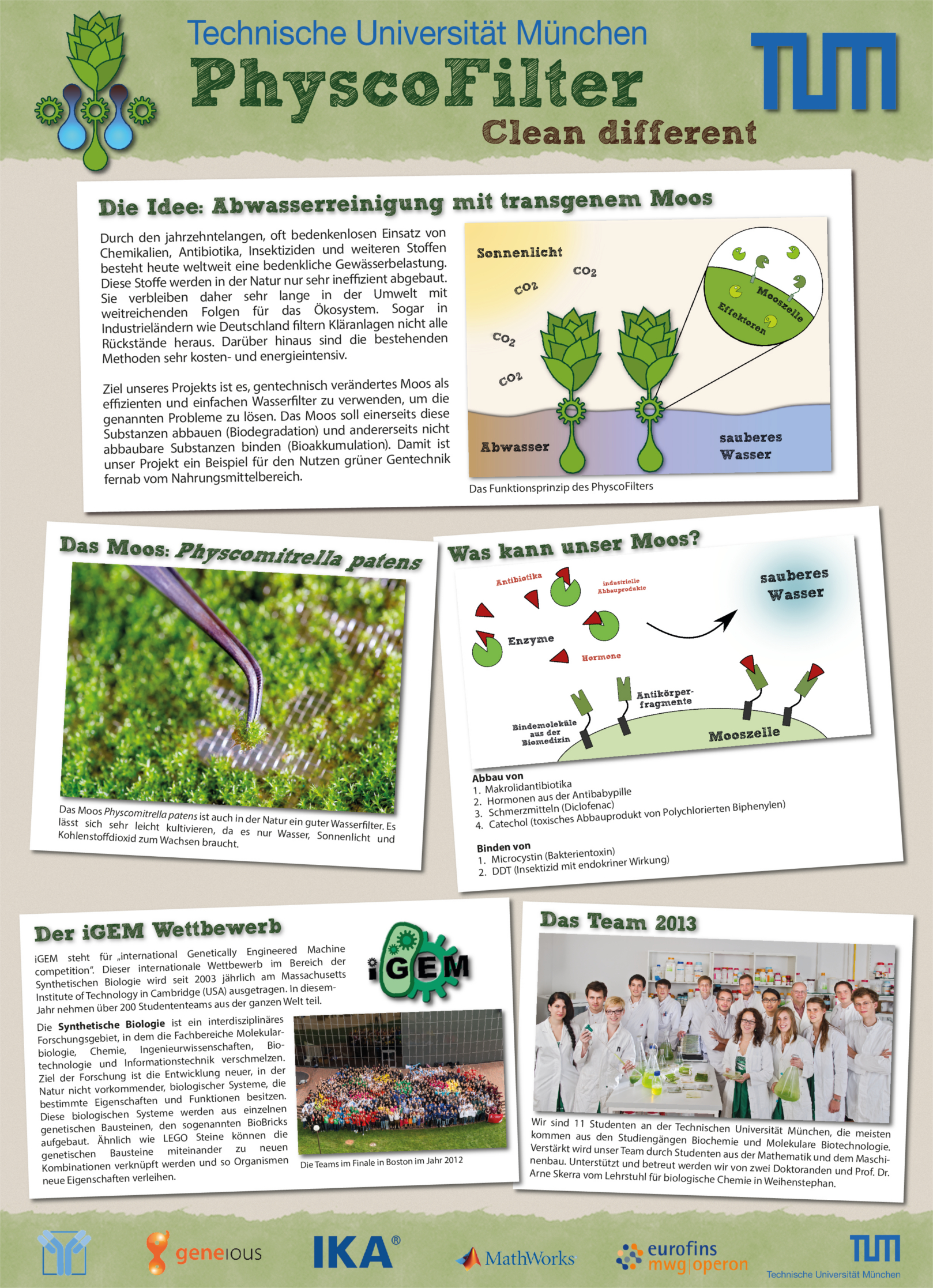
















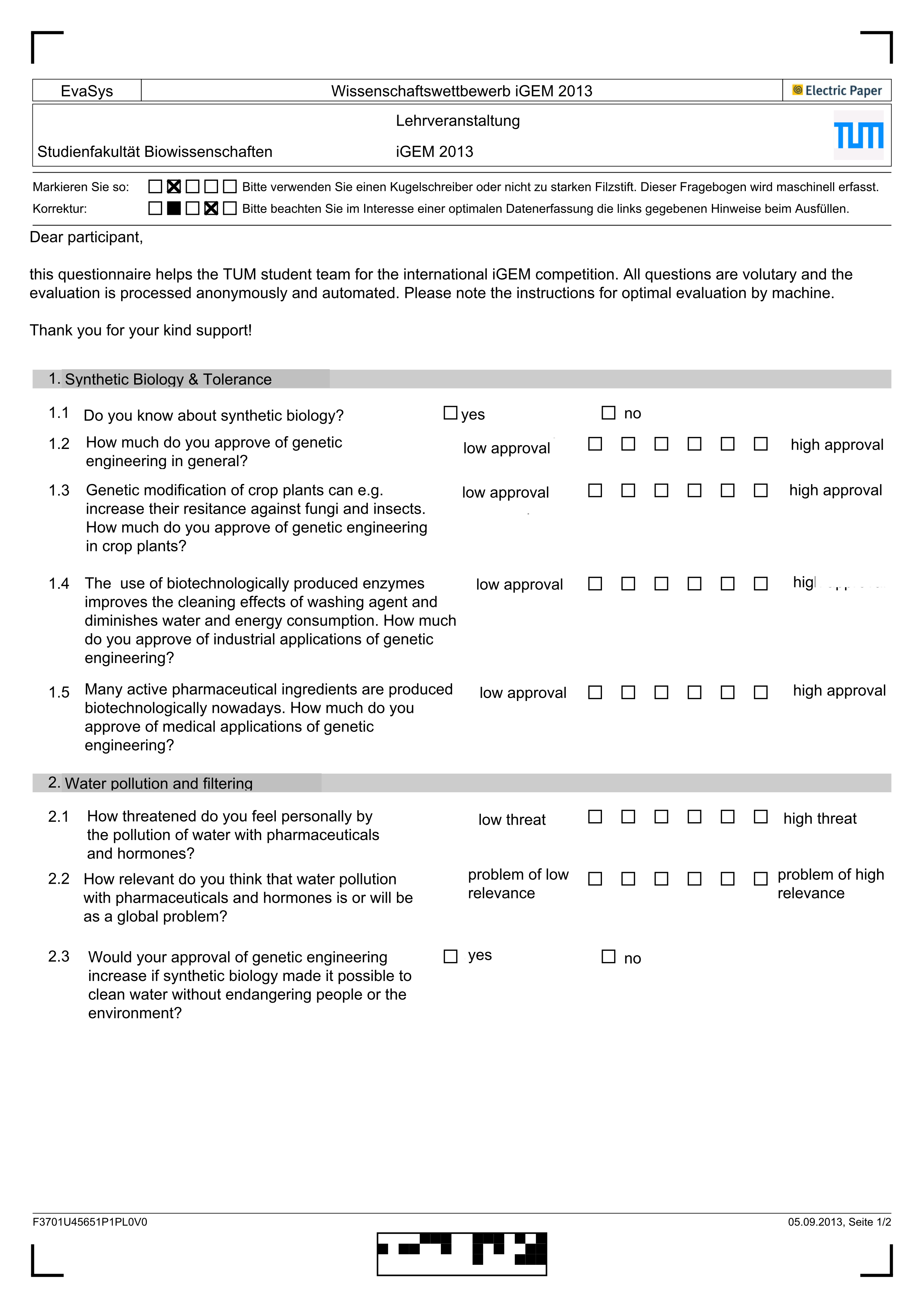
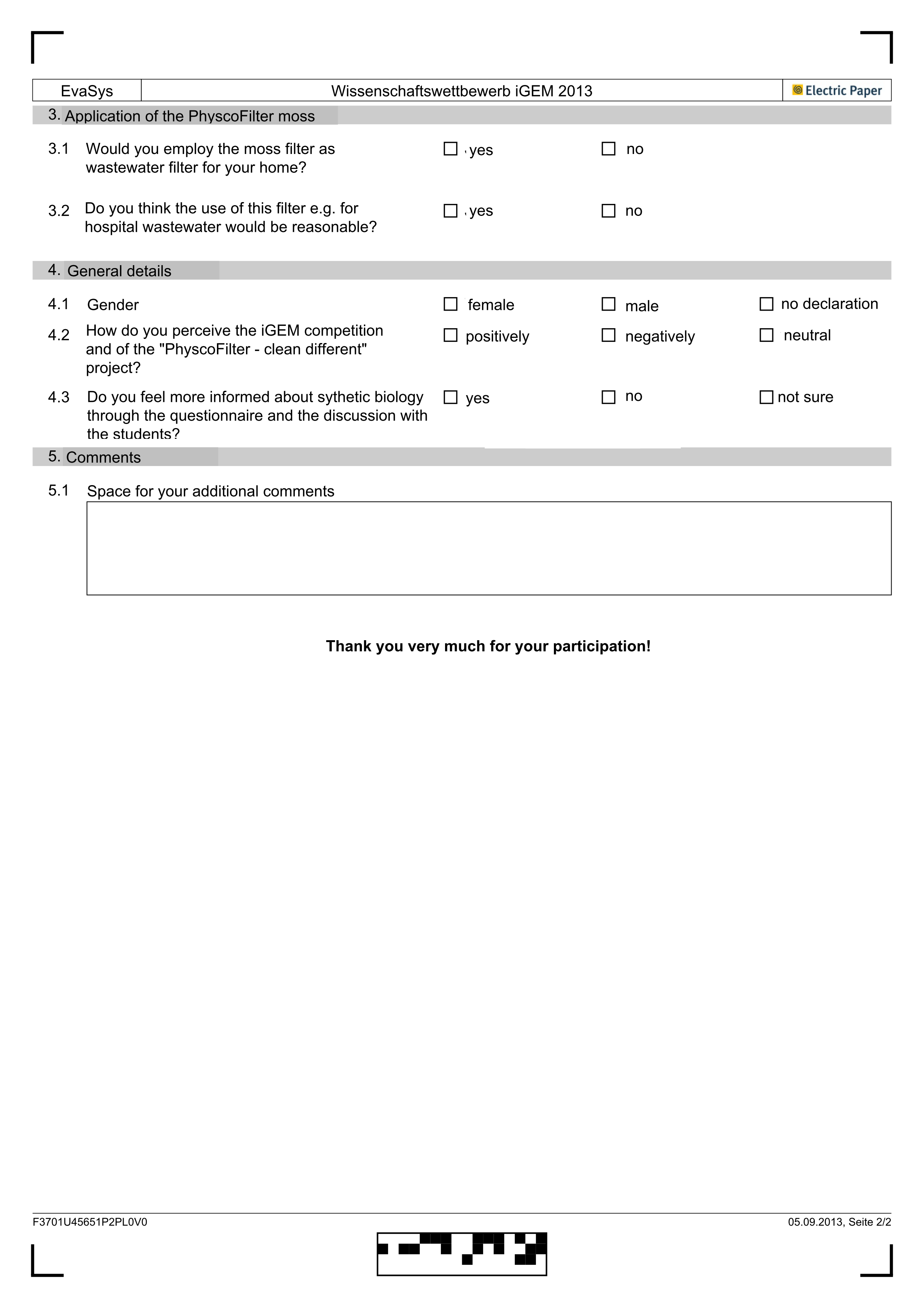
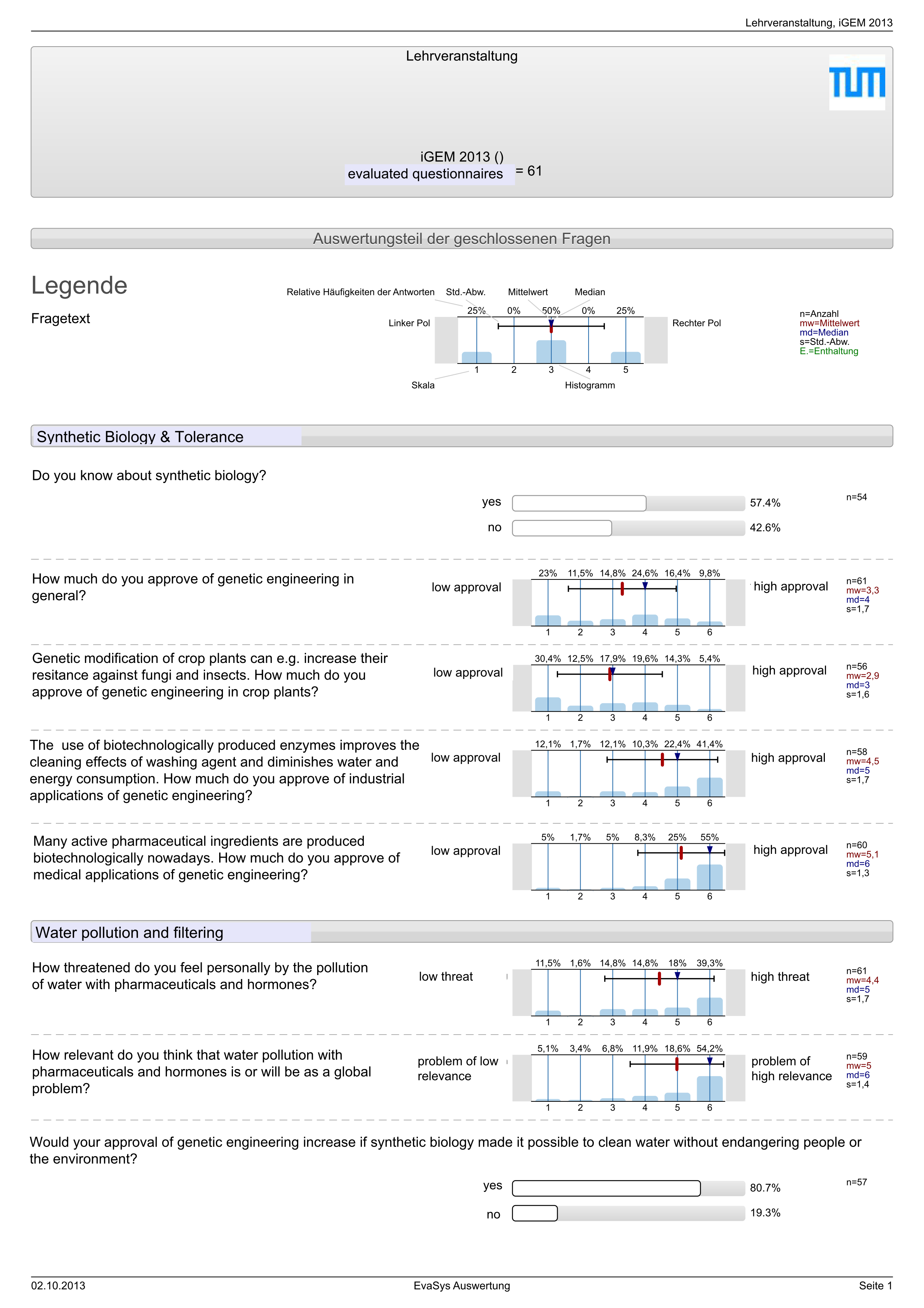
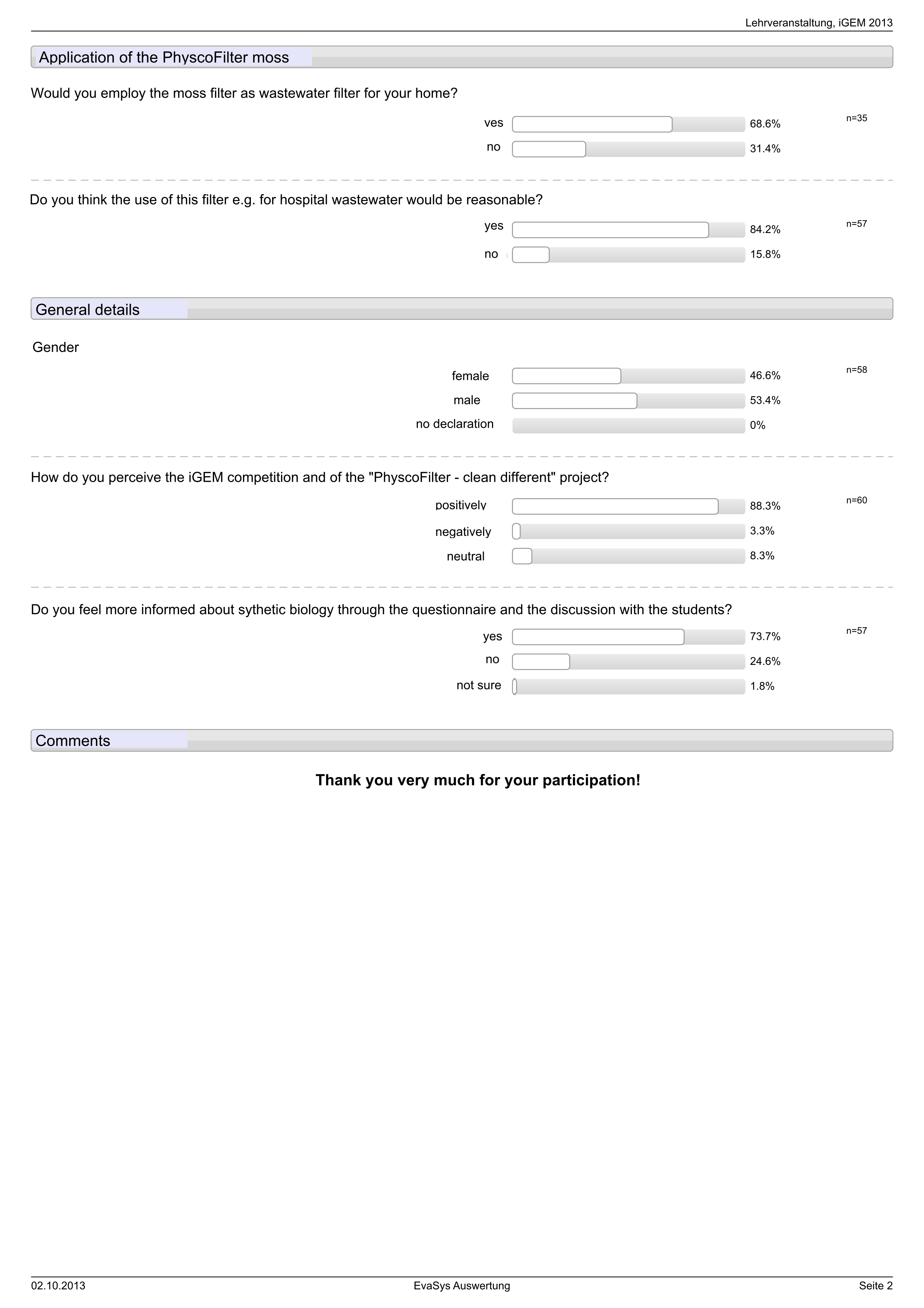











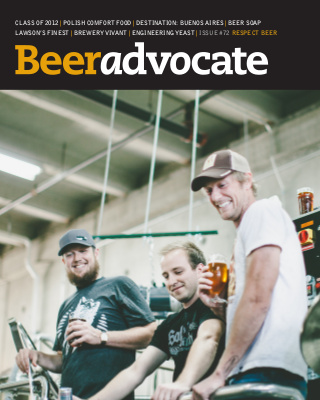
AutoAnnotator:
Follow us:
Address:
iGEM Team TU-Munich
Emil-Erlenmeyer-Forum 5
85354 Freising, Germany
Email: igem@wzw.tum.de
Phone: +49 8161 71-4351